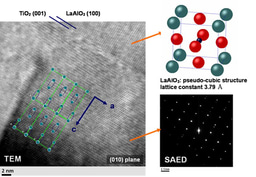From Speciation to Innovation Modes: Expanding the Evolutionary Framework for Endemic Innovation
Published in Social Sciences, Earth & Environment, and Ecology & Evolution

1. Introduction
In a previous article, we proposed an evolutionary perspective for understanding endemic innovation (EI) based on the four classical types of biological speciation. This framework provided a powerful analogy to explain how innovation systems—especially those grounded in specific territorial, cultural, or ecological contexts—emerge through mechanisms similar to geographic isolation, marginality, ecological gradients, or differentiation within shared environments.
In this follow-up piece, we propose a deeper dive: by exploring the subtypes of speciation described in evolutionary biology—such as hybrid speciation, the founder effect, introgression, and reticulate evolution—we uncover even more nuanced parallels with how innovation arises, recombines, and adapts in complex systems.
These subtypes allow us to describe innovation processes that involve cultural fusion, small-group emergence, system recombination, or radical reconfigurations—phenomena that are increasingly central in today’s innovation landscapes. In this article, we briefly describe each biological mechanism and offer concrete, real-world examples of how these logics appear in human innovation systems.

2. Subtypes of Speciation and their Innovation Analogues
Vicariance & Peripheral Isolation → Divergent Innovation at the Margins
Speciation context: Vicariance refers to a population being split by a geographical barrier, while peripheral isolation refers to a small offshoot at the edge of a range evolving separately.
Innovation analogy: These processes mirror how remote, marginalized, or disconnected communities develop solutions divergent from the mainstream.
Example:
-
In the Chiloé Archipelago (Chile), traditional ecological knowledge has produced unique agroforestry and potato biodiversity systems, highly distinct from continental agricultural models (Rafols & Ciarli, 2020).
-
These are not just variations, but functionally divergent systems evolved under specific social-ecological conditions.
Founder Effect → Seed Innovation from Small Collectives
Speciation context: A few individuals colonize a new niche and start a divergent lineage due to limited genetic variability.
Innovation analogy: Small groups or collectives can initiate entirely new innovation pathways under isolation, scarcity or intentional withdrawal from dominant systems.
Example:
-
The Fab Lab rural networks in India or makerspaces in Andean villages represent founder-driven innovation—bottom-up, low-tech but high-impact systems seeded by small knowledge groups (Smith et al., 2017).
Hybrid Speciation & Introgression → Innovation through Fusion and Exchange
Speciation context: Two distinct species or lineages interbreed and produce a viable hybrid species with novel traits.
Innovation analogy: This reflects processes where distinct cultural, technological, or disciplinary systems intersect, creating hybrid innovations that couldn’t have emerged independently.
Example:
-
Andean-Amazonian agroforestry models, which combine Indigenous systems, Spanish colonial techniques and modern permaculture, are hybrid ecologies of practice—emergent from cross-lineage knowledge fusion (Toledo et al., 2009).
-
Similarly, biohacking communities integrating biotech, art, and indigenous knowledge represent fertile zones of “cognitive introgression”.
Reticulate Evolution → Polycentric and Transdisciplinary Innovation
Speciation context:
Reticulate evolution refers to non-linear evolutionary histories where species emerge not by branching alone, but by networks of recombination, including multiple ancestral lineages. It is common in plants and microbes, where hybridization and gene flow between species blur phylogenetic trees into evolutionary webs.
Innovation analogy:
Reticulate innovation occurs when multiple knowledge systems, disciplines, or institutions converge and co-evolve, forming polycentric innovation networks. These systems are not unified or top-down but distributed, fluid, and cross-connected—allowing innovation to emerge from transversal flows rather than singular origins.
Example:
-
Urban sustainability labs, where municipalities, indigenous organizations, climate scientists, and community artists co-create solutions to complex local problems, represent a reticulate innovation model.
-
Projects like ICLEI's translocal climate resilience platforms demonstrate how innovation emerges from overlapping but distinct nodes of knowledge and authority (Ayers et al., 2018).
Chromosomal Speciation → Systemic Innovation through Structural Reconfiguration
Speciation context:
Chromosomal speciation involves large-scale genomic changes (e.g. inversions, translocations) that result in reproductive isolation even in sympatry. These are not gradual adaptations but structural shifts that make two populations incompatible, marking a rapid and fundamental evolutionary transition.
Innovation analogy:
In human systems, this resembles paradigm-breaking innovation—not incremental or adaptive, but disruptive shifts in system architecture that lead to fundamentally different logics or modes of operation.
Example:
-
The shift from linear extractive economies to circular regenerative economies in island or biosphere reserve contexts—such as the Azores or El Hierro—is a case of systemic innovation that restructures value flows, roles, and material cycles.
-
These transitions are not just innovations in practice but in underlying structure, akin to chromosomal rearrangement (Geels, 2002).

3. A Refined Framework: Innovation Evolves in Multiple Trajectories
The expanded evolutionary framework reveals that innovation can evolve through at least seven distinct modes, each with its own ecological, social, and cultural logics. These modes are not mutually exclusive; rather, they reflect different dynamics of emergence across space, time, and scale.
Here’s how the full mapping aligns:
Speciation Subtype |
Innovation Mechanism |
Real-World Example |
|---|---|---|
| Vicariance | Divergence via geographic or social separation | Traditional potato systems in Chiloé |
| Peripheral Isolation | Innovation at the margins | Indigenous irrigation systems in Himalayas |
| Founder Effect | Small group initiating new knowledge lineage | Rural FabLabs, seed banks, grassroots networks |
| Hybrid Speciation | Fusion between distinct cultural/epistemic systems | Andean agroforestry, Indigenous-permaculture blends |
| Introgression | Selective incorporation of external knowledge | Arctic co-designed climate monitoring systems |
| Reticulate Evolution | Polycentric/transdisciplinary innovation webs | Municipal-indigenous sustainability labs |
| Chromosomal Speciation | Paradigm-shifting systemic innovation | Circular economy transitions in island territories |
Each of these mechanisms highlights a different trajectory of innovation—some slow and divergent, others sudden and recombinant. Collectively, they illustrate that context-aware, evolutionary thinking can help identify, support, and scale deep those innovations that conventional models overlook.
4. Conclusion
Innovation, like life, does not follow a single path.
By extending the evolutionary metaphor to include subtypes of speciation, we uncover new ways to see how innovation actually happens—not only through competition and optimization, but through divergence, recombination, marginality, and structural mutation.
In a world shaped by ecological uncertainty and cultural complexity, understanding innovation as an evolving, context-driven process gives us tools to design more resilient, just, and creative futures.
Because sometimes, the most radical innovations emerge not from disruption—but from evolution.






Please sign in or register for FREE
If you are a registered user on Research Communities by Springer Nature, please sign in